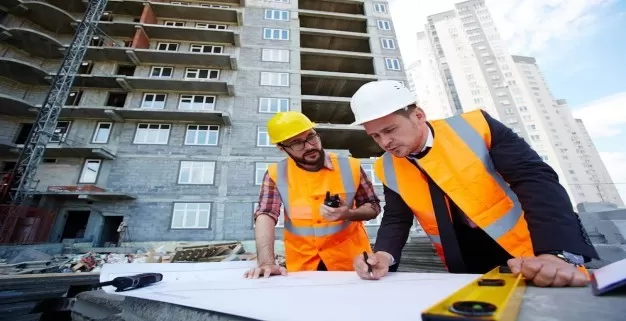
Liability of Consultant/ Engineer for Design Defects
Buildings and fixed facilities are signs of the stability of locations in general. The construction of such buildings and facilities is a type of work requiring scientific qualifications and practical and technical expertise. If any of them is marred by a defect, this may necessarily threaten people's lives, safety, and stability. Unfortunately, the collapse of buildings, whether during construction or not long after the completion of this construction, has become a concern. This often comes as a result of default and negligence in the building materials industry or errors in design or implementation. Given the high pace of development, the large volume of construction projects, and the importance and value of buildings and other fixed facilities, this necessitates tightening the responsibility of builders. In addition to the contractual and tort responsibility of the contractor and engineer, the ten-year liability, or the so-called ten-year guarantee, evolved as an independent obligation on parties involved in the construction process.
The ten-year liability is an exceptional liability with special rules, imposed by law, to provide greater protection for any affected people against demolition or defect of buildings. There are many aspects and forms of liability for the consulting engineer in particular. To address and clarify such an issue, we will present the definition of the engineer. from the legislative aspects, as well as his tasks. After then, we will address the scope of responsibility of the consulting engineer under the following points:
I. Overview of General Legislative definitions of the architect:
a) The French law, under Code Guadet, defines an architect as: "The artist who designs or draws buildings, assigns them proportions, sizes, different divisions and appropriate decorations, supervises the implementation under his responsibility, and finally settles their expenses."
b) As Egyptian Civil Law (“Law”) also defined the architectural engineer, the regulation of the practice of the profession of architecture defined it as:
"A person has the skills of planning, architectural designing, innovative application and implementation, with full knowledge of the art of building under the conditions and requirements of the environment. He also contributes to reconstruction and construction, within the scope of general planning, and enjoys the legal protection required by his profession. "
From the previous definitions, we can indicate that some knew the engineer based on the tasks he undertakes in the field of construction and building from the development of designs, engineering drawings and models, and some knew him based on the competencies and skills he possesses in the field of construction and his ability to innovate, plan and familiarize himself with the origins of architecture and construction.
2. Tasks of the site consulting engineer
The role of the consulting site engineer is to provide a professional service to the client within eight main tasks represented in verification and reporting, preparing detailed designs and contracts, arranging contracts, accepting works, operating systems, and many other services during the project. The tasks of the consulting engineer include a set of planning, design and supervision work in coordination with customers to complete various projects safely and according to the appropriate time and cost. These tasks will be addressed in some detail as follows:
1) Supervising the progress of works, where the most important and main role of the consulting site engineer is to carry out the supervision of the works on the site. The supervision task includes periodic site visits and ensuring that the works conform to the plans and specifications set for the project. It also includes following up on the activities and work of trades on site and monitoring them to carry out the work with the required quality and within the specified period.
2) Communicating with fellow engineers from different fields and contractors to reach practical and logical solutions to solve design, executive and other problems. This role also includes attending general and private meetings to discuss any issues related to the project and ensure that all work is performed easily and smoothly.
3) Providing engineering consultancy and risk assessment, where the on-site consulting engineer usually provides engineering consultations to clients who may face multiple engineering issues. These consultations may be brief at times, while they may be prolonged at other times.
4) Assessing and managing risks related to the project ensuring the continuation of the project work without any risks and ensuring the safety of workers, facilities and the environment surrounding the project, while correcting any defects that may affect the requirements of production, quality and safety.
5) Verifying facts and inputs. These matters usually require engineering studies, mathematical calculations, inspection of equipment or structural structures, as well as the study and review of many previous reports.
6) Preparation of many reports, including daily or weekly work reports, completion reports, feasibility reports and other reports that are considered a written and reliable means of communication between the work site and management, which may be placed elsewhere outside the site or sometimes in another city.
7) Preparation of engineering designs on site, which is not limited to engineering calculations in the office only, but may include preparing quick engineering plans and drawings and preparing work specifications under the required project specifications.
8) Legal Services on the project site, whether it is related to fieldwork or office work. The engineer may provide legal services such as following up on some legal procedures related to obtaining the necessary licenses to complete the project. It is possible to use consulting engineers as experts in court procedures and cases that require engineering expertise.
3. Scope of Responsibility of the Consulting Engineer for Design Defects
Most of the legislations and laws generalized the term "engineer" without allocating it to the "architect" as stated in the provisions of the Law, where the engineering consultancy contract was also described as a contract between an engineer, or consulting engineer, with extensive scientific and practical experience in construction and building work, and the client. Under this contract, the engineer is committed to providing advice and analysis under the controls of the profession to the client in exchange for a fee. This would make the client's decision toward a specific reality or an existing issue unless the engineer's obligation extends to supervising the implementation of works.
Therefore, it is established that the basis of the liability of the engineer and the contractor in the ten-year guarantee is a presumed error that cannot be proven otherwise. However, the validity of the ten-year guarantee to the consulting engineer requires detail based on his scope of contractual obligations with the client, to the extent to which the advice and analysis provided by the consulting engineer are related to the construction and building work, and the extent of the relationship between the consulting engineer to start implementation. Nevertheless, if the contract between the consulting engineer and the client affects the importance of the engineer’s obligation or the subject of his obligation does not affect the safety of the building. Hence, such obligation is an obligation once the objective is created, and the result is achieved.
Article 652 of the Law expressly stipulates that “If the architect’s duty to draw the designs without being assigned to control the implementation, he will only be responsible for the defects of design." This confirms that the consultant engineer and the designer are not responsible for the follow-up and control of implementation, as long as he is not assigned to do so by the employer by the agreement.
It is likely that the consultant engineer, architect, and contractor may be included in the condition of release from liability in every breach that did not result in the total or partial demolition of the building or defect, and whether the defect would negatively affect the value of the building or the amount of its use. Also, issues of the responsibility of the consulting engineer, the architect and the contractor, in construction and building work, are mainly caused where no explicit legal regulation exists. Therefore, the prevalence of diligence regarding the facts of the dispute cannot be avoided, whether the dispute is submitted to the judiciary or arbitration.

 English
English
 العربية
العربية
 中文语言
中文语言
 русский язык
русский язык
 Le français
Le français
 Española
Española


